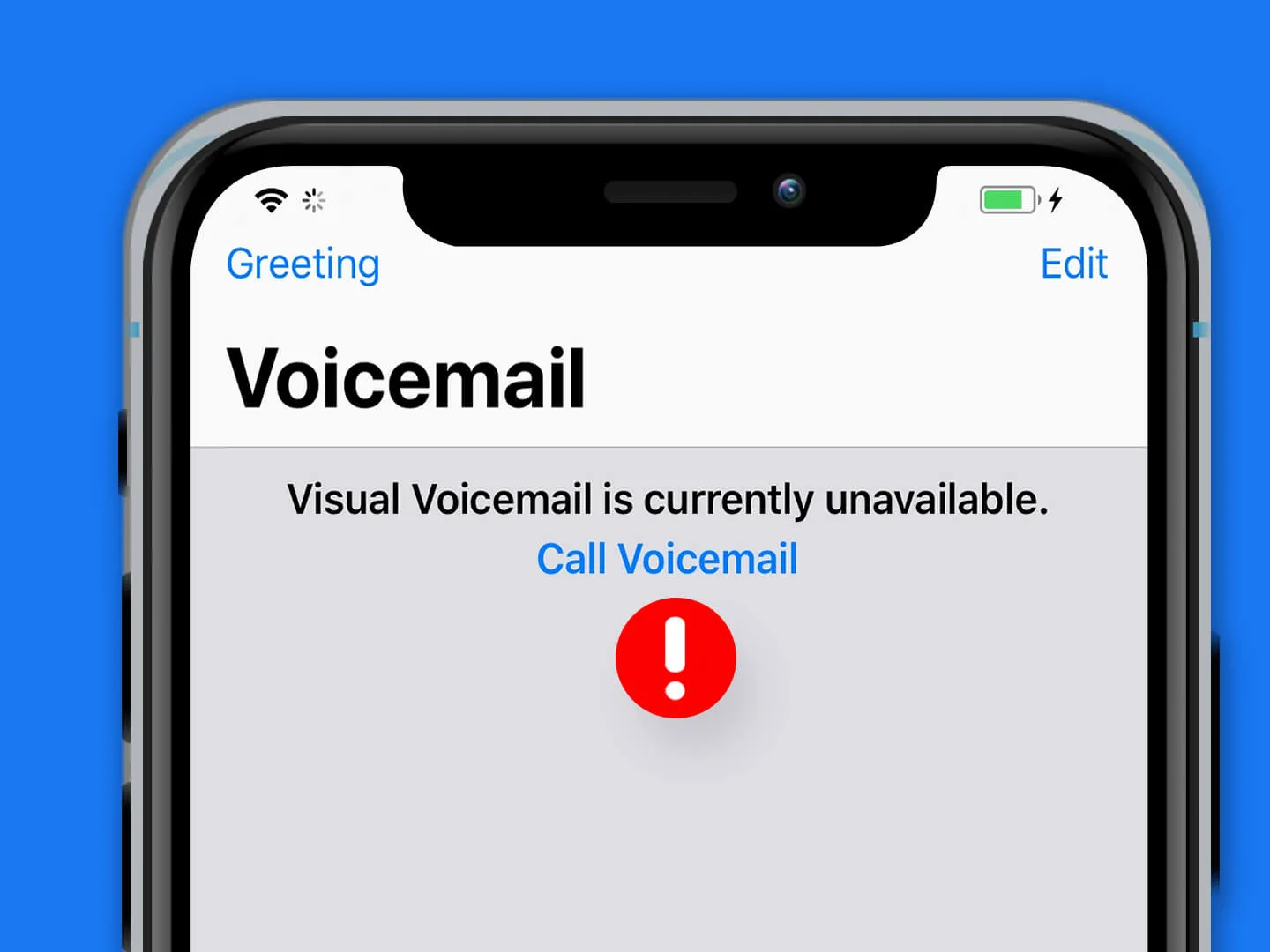In this digital age, where communication is key, voicemail serves as a vital tool to ensure that we can still connect even when someone is unable to answer their phone. Let’s delve into the world of voicemail and explore how it works, how to set it up, and how to optimize its usage.
Voicemail is a system that enables callers to leave recorded messages when the recipient is unavailable or unable to answer the phone. It is essentially a personalized answering machine that allows individuals to leave important information, inquiries, or messages for the intended recipient.
Setting up voicemail is a simple process that can be done directly from your phone. The steps may vary slightly depending on your device, but the general process remains the same. Let’s take a look at how to set up voicemail on most smartphones:
1. Open your phone app: Locate and open the phone app on your device. This is usually denoted by an icon resembling a telephone receiver.
2. Access voicemail tab: In the phone app, navigate to the voicemail tab. This may be indicated by an icon or a labeled tab at the bottom or top of the screen.
3. Call voicemail: Select the option to call voicemail. This will initiate a call to your voicemail service provider.
4. Follow prompts: If prompted, enter your voicemail password or set up a new one. Then, follow the prompts provided by your service provider to complete the setup process.
Some smartphones also offer a feature called visual voicemail, which provides a more user-friendly and convenient way of managing your voicemail messages. To enable visual voicemail, follow these steps:
1. Open the phone app: Launch the phone app on your device.
2. Access settings: Look for the settings option, usually denoted by a gear or three dots icon, and tap on it.
3. Voicemail settings: Scroll through the settings menu until you find the option for voicemail. Tap on it.
4. Enable visual voicemail: Look for the option to turn on visual voicemail and toggle it to the “on” position.
If you encounter any issues with your voicemail, it’s worth checking your settings to ensure everything is in order. Here are the steps to follow:
1. Go to Phone settings: Open your phone settings by accessing the settings app on your device.
2. Locate voicemail settings: Within the phone settings, search for the option labeled “voicemail.” Tap on it to access the voicemail settings.
3. Verify details: Check that all the details, including the voicemail number and service provider, are correct. If any settings appear incorrect, revert them to their original values and save the changes.
Voicemail has become an indispensable tool in our fast-paced lives. It allows us to leave messages and receive important information even when we can’t pick up our phone. Whether you’re using it for personal or professional purposes, setting up and optimizing your voicemail ensures seamless communication and effective message delivery.
Remember, voicemail is not just a feature on your phone; it’s a valuable communication tool that enhances your connectivity and keeps you in touch with the people who matter most. So, the next time you hear that familiar beep, leave a clear and concise message, knowing that voicemail has got your back.
How Do You Set Up Voicemail When Your iPhone Says Call Voicemail?
To set up voicemail on your iPhone when it prompts you to call voicemail, you have a couple of options:
1. Using the Phone App:
A. Open the Phone app on your iPhone.
B. Tap on the Voicemail tab located at the bottom right corner of the screen.
C. Next, tap on the option to Call Voicemail.
D. Follow the prompts to set up your voicemail. If you are prompted to enter a voicemail password, enter it and continue with the setup process.
2. Using the Phone App (Alternate method):
A. Open the Phone app on your iPhone.
B. Press and hold the 1 key on your phone’s keypad. This will automatically dial your voicemail.
C. If prompted, enter your voicemail password.
D. Follow the prompts to set up your voicemail.
It is important to note that the exact steps may vary slightly depending on the version of iOS you are using on your iPhone. However, these general instructions should work for most iPhone models.
If you encounter any issues or have trouble setting up your voicemail, you may need to contact your mobile service provider for further assistance.

How Do You Get Visual Voicemail Instead Of Call Voicemail?
To enable Visual Voicemail on your phone, follow these steps:
1. Open the Phone app on your device.
2. Look for the More options icon, typically located at the top right corner of the screen (represented by three vertical dots).
3. Tap on the More options icon to reveal a drop-down menu.
4. From the drop-down menu, select “Settings.”
5. In the Settings menu, locate and tap on the “Voicemail” option.
6. Within the Voicemail settings, you should see an option to enable Visual voicemail. Toggle the switch to turn it on.
7. Once enabled, Visual Voicemail will be activated on your device.
By activating Visual Voicemail, you will be able to see a visual representation of your voicemail messages, making it easier to manage and access them. This feature allows you to view a list of voicemails, listen to them in any order, and even read transcriptions of the messages if available.
Note: Visual Voicemail availability may vary depending on your device model and carrier. If you don’t see the option to enable it in your settings, it’s possible that your device or carrier does not support this feature.
What Does Call Voicemail Mean?
Voicemail refers to a telecommunications service that allows individuals to leave recorded messages for others when they are unable to answer a phone call. When someone calls another person and they are unable to pick up the call, the caller can leave a voicemail message instead. This service is commonly used when the recipient’s phone is turned off, out of network coverage, or simply when they are unavailable to answer the call.
Voicemail provides a convenient way for callers to communicate important information or relay messages to the intended recipient. It serves as an alternative to speaking directly with someone during a phone call. With voicemail, callers have the opportunity to leave a recorded message that the recipient can listen to at a later time.
When leaving a voicemail, callers typically hear a recorded greeting or prompt that instructs them on how to leave their message. They are prompted to speak their message after a tone, and they can usually listen to their recorded message before finalizing and sending it.
Voicemail messages are stored on the recipient’s voicemail system until they are accessed by the recipient. The recipient can check their voicemail by calling their own voicemail number or accessing it through a voicemail application on their phone. Once accessed, the recipient can listen to the recorded messages left by callers.
Voicemail is a valuable tool for communication, as it allows individuals to stay connected and exchange information even when they are unable to directly answer a phone call. It provides a convenient way to receive and retrieve important messages, ensuring that communication can still occur effectively even when immediate contact is not possible.
Why is Your Voicemail Box Not Working?
There can be several reasons why your voicemail box is not working. Here are some possible causes and solutions:
1. Incorrect voicemail settings: Check your phone’s voicemail settings to ensure that all details are accurate and legitimate. Verify the voicemail number and service provider. If any settings are incorrect, revert them to the original settings and save them.
2. Network issues: Poor network connectivity or coverage can sometimes affect the functioning of your voicemail. Ensure that you have a strong network signal and try accessing your voicemail in an area with better reception.
3. Full voicemail box: If your voicemail box is full, you may not be able to receive new voicemails. Delete any unwanted or old voicemails to free up space. You can also check if there is a limit on the number of messages your voicemail can store and adjust the settings accordingly.
4. Voicemail service activation: If you recently switched to a new phone or service provider, it’s possible that your voicemail service has not been activated yet. Contact your service provider and verify if the voicemail service is activated on your account.
5. Software or app issues: Sometimes, software glitches or issues with the voicemail app can prevent it from working properly. Try force-closing the voicemail app and reopening it. If the problem persists, consider updating the app or contacting your phone’s manufacturer for further assistance.
6. Call forwarding settings: Check if you have any call forwarding settings enabled that might be redirecting incoming calls away from your voicemail. Disable any call forwarding options to ensure that calls are directed to your voicemail box.
If none of these solutions work, it’s recommended to contact your service provider or phone manufacturer for additional support. They will be able to troubleshoot the issue further and provide specific guidance based on your phone model and service provider.
Conclusion
Voicemail is a valuable feature that allows individuals to leave recorded messages when the recipient is unable to answer their phone. It is an essential tool for effective communication, especially in situations where immediate response may not be possible. By setting up voicemail, users can ensure that important messages are not missed and can be accessed at a later time. Additionally, the availability of visual voicemail on mobile devices provides a convenient and efficient way to manage and listen to voicemail messages. It is important to check voicemail settings regularly to ensure that all details are correct and to avoid any issues with accessing and retrieving messages. With the ability to leave and receive voicemail, individuals can stay connected and in touch with their contacts, even when direct communication is not possible.








